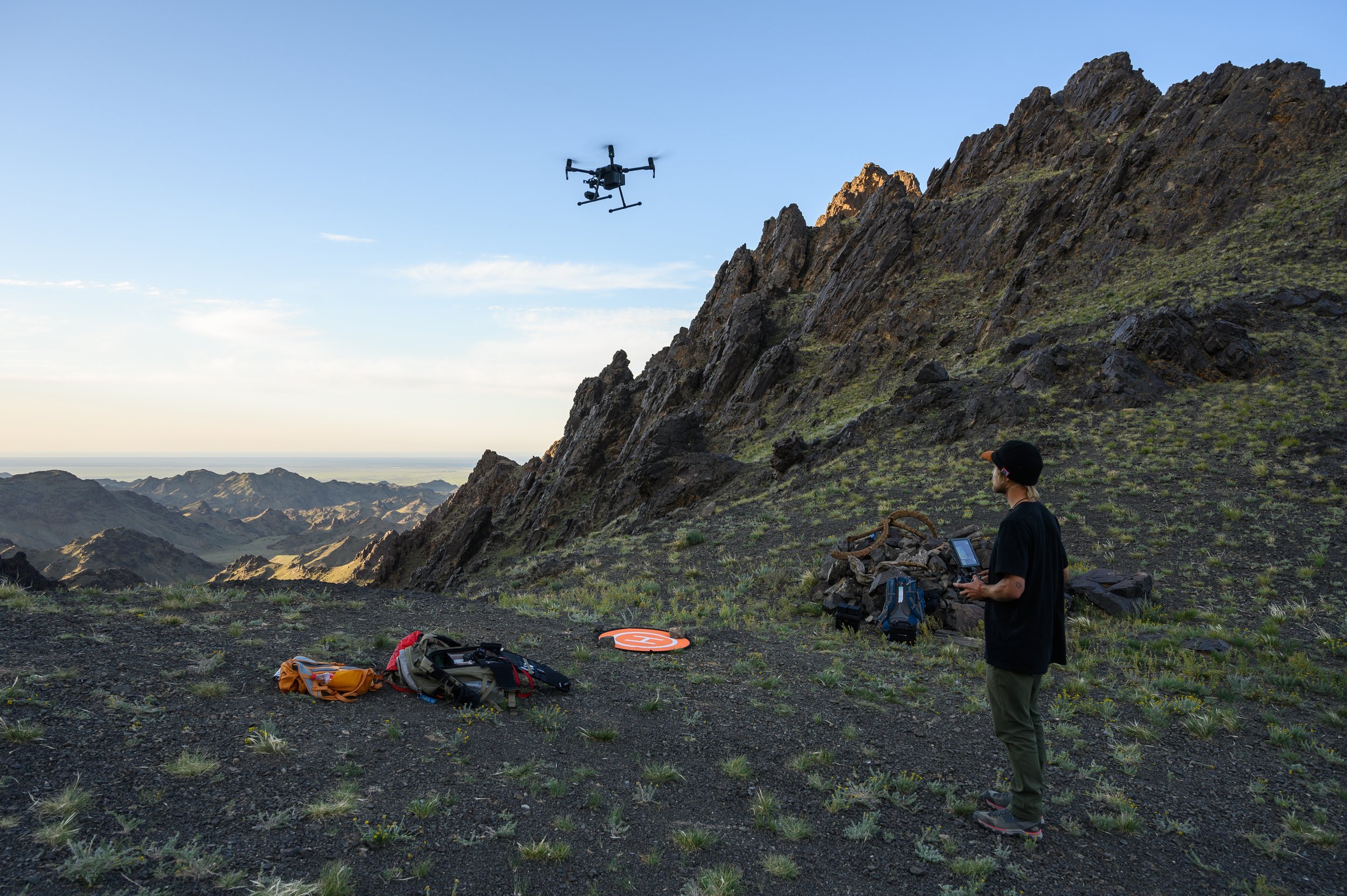
Drone Research
Using Drones to Estimate Snow Leopard Prey Density
As part of their cutting-edge efforts to monitor wildlife populations, RMCC has begun employing drone technology to estimate the prey populations of snow leopards in Mongolia. Snow leopards, elusive and solitary, are notoriously difficult to study using traditional methods, such as on-the-ground tracking or camera traps. Drones, equipped with high-resolution cameras and thermal sensors, allow researchers to cover vast, rugged terrains in remote regions. By surveying these areas from the air, RMCC can gather accurate data on the abundance of the snow leopards' prey, such as ibex, argali sheep.
Complimenting snow leopard research in Mongolia, RMCC also applies drone technology to monitor similar prey populations in North America, specifically focusing on the conservation of wild cats like the mountain lion. Both species share many similar issues and challenges. RMCC’s partnership with CSU Drone center allows extensive testing in Colorado prior to tests in Mongolia. The RMCC-Mongolia team have complete two successful rounds of tests in Colorado and at Mongolia’s Ick Nart Nature Reserve. Positive results have led to grants and donations to continue this research into 2025 with a third trip to Mongolia pending final logistical details.
Wild Ibex, one of the primary prey animals of snow leopards.
Argali


